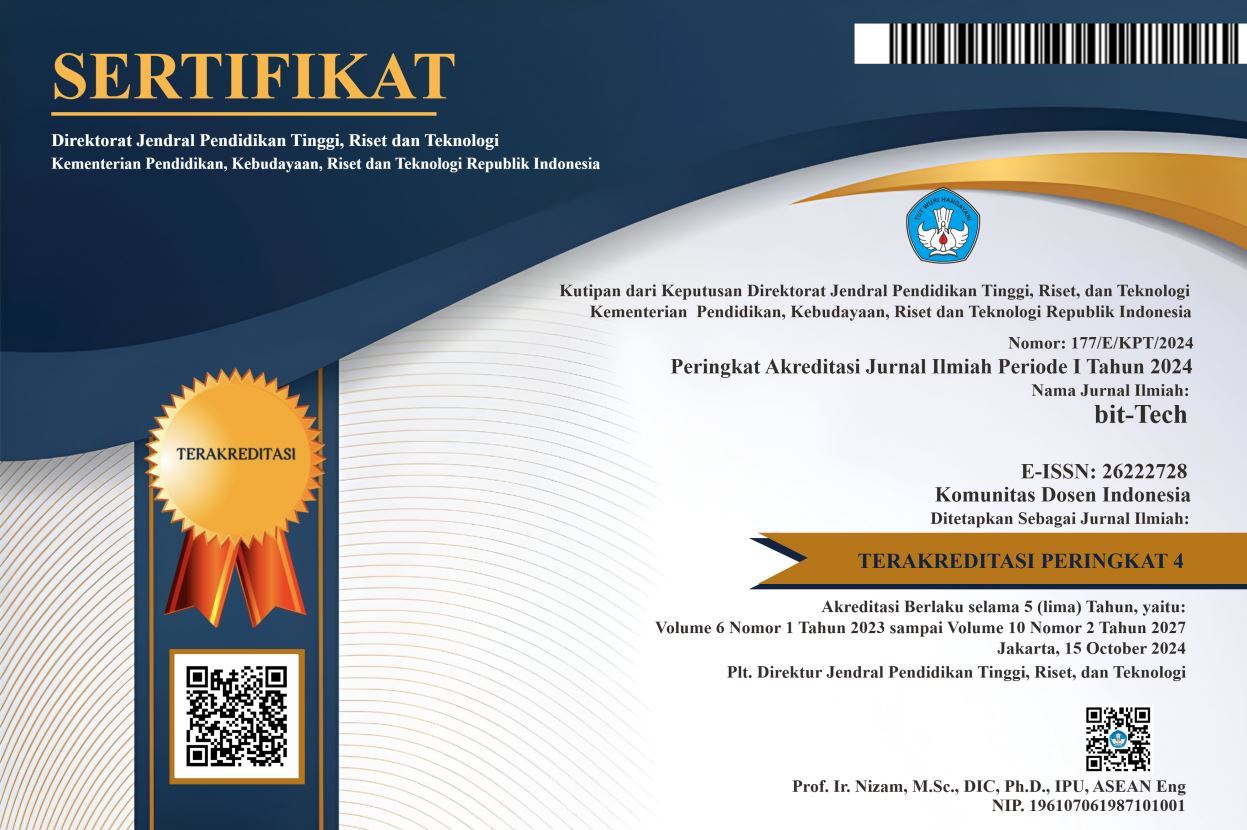Web-Based Geographic Information System Design In Madrasah In The North Area Of Tangerang District
DOI:
https://doi.org/10.32877/bt.v5i2.612
Keywords:
GIS, Madrasah, Tangerang, Web, API
Abstract
Many madrasah under the auspices of the Tangerang Disctrict Education Office are scattered and the public does not know where the madrasah are. So that mapping is needed to find out the distribution of these madrasah. The development of residential areas and the increasing number of residents raises several problems, including inadequate school capacity, lack of access points to schools, incomplete supporting facilities and so on. Conditions like this can disrupt the stability of education services in the northern region of Tangerang Disctrict. With the development of the world of information today makes a lot of convenience, one technology that is currently being developed is the Geographic Information System (GIS). The information system regarding school mapping is a combination of GIS and web technology, allowing the information to be visualized into the web so that it can be accessed by the wider community without any time and place limits. This system was built using the Google Maps API to display a map of the location of madrasah in the northern area of ??Tangerang district. Spatial data for madrasah was obtained from the Tangerang District Education Office. The results of the trial of the Geographic Information System application in the Northern area of ??the Tangerang Disctrict, have provided information to the community and the Education Office about mapping madrasah in the Northern Region of Tangerang Disctrict.
Downloads
References
F. Alawiyah, “Pendidikan Madrasah di Indonesia: Islamic School Education in Indonesia,” J. Aspir., vol. 5, no. 1, pp. 51–58, 2014.
N. Q. Timor, “Evaluasi Lokasi Sekolah Menegah Menggunakan Sistem Informasi Geografis Berdasarkan Permendiknas No . 24 Tahun 2007 Dan Permendiknas No 40 Tahun 2008 ( Studi Kasus?: Kota Malang , Jawa Timur ),” vol. 2008, no. 24, pp. 1–10, 2019.
D. KURNAEDI, A. Surahmat, E. Oktora, and M. Sihotang, “Tourism Geographic Information System using Google API Banten,” bit-Tech, vol. 2, no. 2, pp. 27–32, 2020, doi: 10.32877/bt.v2i2.109.
D. Kurnaedi, I. Setiawan, E. O. Haryanto, and ..., “Application of Posyandu Geographic Information System of Pinang Sub-District Using Leaflet-Based Igniter Code,” J. TAM (Technology …, vol. 11, 2020, [Online]. Available: https://core.ac.uk/download/pdf/327172330.pdf.
J. Stoter and S. Zlatanova, “3D GIS, where are we standing,” Proc. ISPRS Work. Spat. temporal multi-dimensional data Model. Anal., no. January 2015, p. 8, 2003, [Online]. Available: http://citeseerx.ist.psu.edu/viewdoc/download?doi=10.1.1.106.5529&rep=rep1&type=pdf.
A. Annugerah, I. F. Astuti, and A. H. Kridalaksana, “Sistem Informasi Geografis Berbasis Web Pemetaan Lokasi Toko Oleh-Oleh Khas Samarinda,” Inform. Mulawarman J. Ilm. Ilmu Komput., vol. 11, no. 2, p. 43, 2016, doi: 10.30872/jim.v11i2.213.
Rosdiana, F. Agus, and A. H. Kridalaksana, “Menggunakan Google Maps Api,” J. Inform. Mulawarman, vol. 10, no. 1, pp. 38–46, 2015.
A. A. Wahid, “Analisis Metode Waterfall Untuk Pengembangan Sistem Informasi,” J. Ilmu-ilmu Inform. dan Manaj. STMIK, no. November, pp. 1–5, 2020.
Downloads
Published
How to Cite
Issue
Section
License
Copyright (c) 2022 bit-Tech

This work is licensed under a Creative Commons Attribution-ShareAlike 4.0 International License.
I hereby assign and transfer to bit-Tech all exclusive copyright ownership rights to the above work. This includes, but is not limited to, the right to publish, republish, downgrade, distribute, transmit, sell, or use the work and other related materials worldwide, in whole, or in part, in all languages, in electronic, printed, or any other form of media, now known or hereafter developed and reserves the right to permit or license a third party to do any of the above. I understand that this exclusive right will belong to bit-Tech from the date the article is accepted for publication. I also understand that bit-Tech, as the copyright owner, has sole authority to license and permit reproduction of the article. I understand that, except for copyright, any other proprietary rights associated with the work (e.g. patents or other rights to any process or procedure) must be retained by the author. In addition, I understand that bit-Tech permits authors to use their papers in any way permitted by the applied Creative Commons license.


 DOI :
DOI :
 Abstract views: 126
/
Abstract views: 126
/  PDF downloads: 138
PDF downloads: 138











